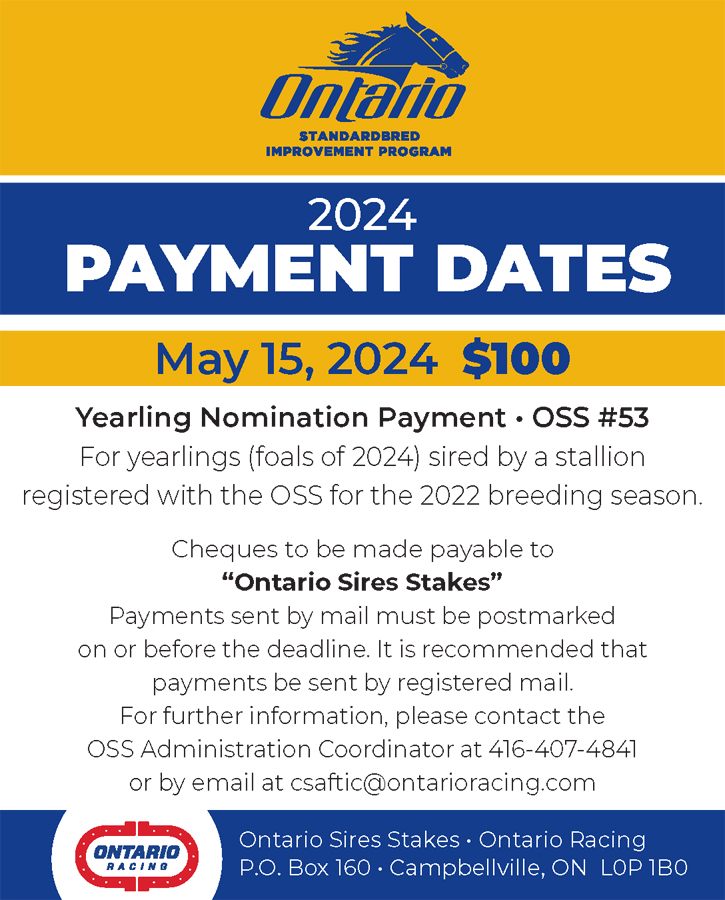

Should there be separate records for geldings?
Going from nuts to nutless is certainly life-changing. It is also often the key for taming unruly standardbreds. But, should geldings have their own speed categories? We asked three noted racing-connected vets.
by Debbie Little
At the 2016 Academy Awards, host Chris Rock questioned the need to have both male and female acting categories.
“There’s no reason,” Rock said. “It’s not track and field. You don’t have to separate ‘em. You know, Robert De Niro’s never said, ‘I better slow this acting down, so Meryl Streep can catch up.’”
As with track and field, separate world records for male and female pacers and trotters makes perfect sense.
However, when it comes to just the males, is it necessary to have separate records for both colts and geldings?
HRU posed that question to three noted veterinarians — Dr. John Hayes, Dr. Richard Meirs and Dr. Ian Moore — to get their expert opinions. Is there, perhaps, a good medical reason for the separation.
“I’m guessing that this is another of racing’s historical but never-updated ‘traditions,’” said Hayes, who won the 1981 Meadowlands Pace driving Conquered. “I see no reason for geldings to have a separate record category. Whether testosterone disadvantages or advantages is an interesting debate topic possibly, but a single category including both serves the purpose of identifying the gender’s best.”
According to the United States Trotting Association’s information and research manager, Anne Chunko, the first appearance she could find of separate records for “fastest mare, stallion and gelding” was in volume 9 of Wallace’s Year-Book of Trotting and Pacing in 1893.
When the USTA was founded in 1939, they apparently carried on the tradition set by Wallace of the American Trotting Register Association.
That inaugural year, under the headline “Championship Records,” category “Trotting on Mile Track,” and division “Championships With Respect to Sex,” listed was Greyhound (gelding), Rosalind (mare) and Lee Axworthy (horse). There were also divisions for yearlings, 2-year-olds, 3-year-olds, 4-year-olds and 5-year-olds.
Nowadays, under “Top Performers,” the USTA has broken the pacing, trotting and leading horses categories into four divisions: all ages, 2-year-olds, 3-year-olds and aged. The Top Performers are also divided by individual years and the new All-Time category that goes beyond just one season.
By performers All Time, the gelding Homicide Hunter has been the top older trotter since going 1:48.4 as a 6-year-old in 2018. For 2023, the top 10 older pacers by record category is dominated by geldings, which hold seven of the 10 spots with 6-year-old Ruthless Hanover leading the way, with a mile of 1:46.3.
Moore, trainer of many top horses including the 2008 Little Brown Jug winner Shadow Play, agrees with Hayes that records for both colts and geldings is “redundant” and believes just female and male records would be fine. He thinks it is possible that when these records were first kept back in the late 1800s, people may have thought that the loss of testosterone from the castration process may have been, at least in part, responsible for the creation of separate records.
“From a veterinary standpoint, it would be hard for me to say that because they do or don’t have testosterone, they’re going to go faster or slower, that’s for sure,” Moore said. “I don’t think I could say that.”
Meirs, president and general manager of Walnridge Farm in New Jersey, agreed that how fast a horse goes is probably not dependent on whether or not they are intact.
“I don’t necessarily think that [how fast they go] has anything to do with the existence or lack thereof, of the gonads, in general,” Meirs said. “Customarily, there’s a reason why horses are gelded, whether it be their attitude or whether it be somehow affecting their gait. But the other thing that’s entered into the dynamic is that we no longer can use anabolic steroids as supplements to geldings. So that’s changed things a little bit.
“So, of course, when you take a horse’s gonads, you also take a large source of the anabolic endogenous, anabolic steroid production. So, in other words, his testosterone goes through the floor. And there are a lot of people that are much, much more reluctant to geld a horse now because there are some horses where it affects their levels of testosterone dramatically and testosterone is an important component to a horse’s stamina.”
Meirs also thinks that the importance of world records may be a thing of the past.
“Well, I think that there are a lot of people that just try to find reasons to produce world records of limited validity in a lot of senses,” Meirs said. “In the past, [a world record] was a big deal. But as fast as these horses are going now and the speed being just astronomical, the designation of a world record doesn’t really mean a whole heck of a lot in the scheme of things. You know, the days when Stanley Dancer flew Nevele Pride to Indianapolis to break the world record in a time trial because it was going to enhance his value as a breeding sire are over.
“The days that people packed horses up and sent them to Lexington to race them in a time trial for a world record no longer exist because everybody now knows that it’s not just the speed, that there’s so much that goes into a horse’s accomplishments. How fast they go really is not as important as who they beat and how much money they make and what competition they’re up against. In the dynamics of trying to value horses, I think that that’s more important in this day and age than just the quote unquote record.”
The first horse that the Meirs Family stood at stud at Walnridge was Peerswick, the first horse in the state of New Jersey to pace in two minutes.
“Vernon Dancer drove him at Freehold, and it was before The Meadowlands, but we’re marketing this horse as being the first horse to pace in two minutes in the state of New Jersey to try to get mares to him,” Meirs said. “My mom’s obituary had her holding that horse in the front yard in 1975. And I was thinking to myself the other day, ‘My goodness, how times have changed.’
“But for the better. I think that racing is stronger now. I think the horses are great, great athletes and I would love to see some things different but, it’s still a great sport.”
Moore and Meirs agreed that a good reason to geld a horse is when one is a bad actor.
As a young man growing up on Prince Edward Island, Moore remembers a particularly difficult horse named Sonny Meadows.
“He was kind of a dirty bugger and he injured somebody one time when he was 4 years old and they gelded him,” Moore said. “He was racing in the free for all as they called them — the open paces back here back then, this would be in the ’70s, and after he was gelded, he still raced in the open paces and he was still the same except he was a lot nicer to handle.
“So, you know, medically speaking, it would be hard for me to say that testosterone is going to make them go faster. And, I mean, if that was the case, then why would anybody geld them?”














